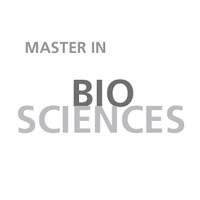Disciplines
publicado
05/10/2018 18h14,
última modificação
10/08/2021 11h20
Syllabus of the disciplines of the Graduate Program in Biosciences (PPG-BC)
- Conteúdo
- Mandatory disciplines
- Elective disciplines
- Neurobiological and clinical basis for pain and nociception
- Developmental biology and embryotoxicity
- Molecular biology and gene regulation in cancer
- Microbial bioprospecting applied to health
- Biochemistry and molecular genetics of microorganisms
- Biotoxinology: tools for biomedical research and its importance in health
- Medical cannabinology
- Human chronobiology
- Scientific dissemination
- Entrepreneurship for scientists
- Genetic engineering
- Evolution and human health
- Human and clinical genetics
- Integrative genetics: from the dna to the chromosome, going through their alterations
- Immunometabolism and chronic disease
- Immunoparasitology
- Analytical method for extracting organic compounds in complex matrices
- Neurobiology of disorders of human behavior
- Cognitive neuroscience of learning and education
- Principles of neurosciences and physiopathology in the disorders of the central nervous system
- Chemical prospection of secondary metabolites
- Systematic review in health
- Chromatography techniques for analysis
- Techniques for handling and using animals in biosciences
- Technology in vaccine development and production
- Topics in regenerative medicine: gene and cell therapy
- Topics in cellular and molecular biology
- Special topics in physiology and homeostasis
- General and experimental toxicology
Mandatory disciplines |
Elective disciplines |



